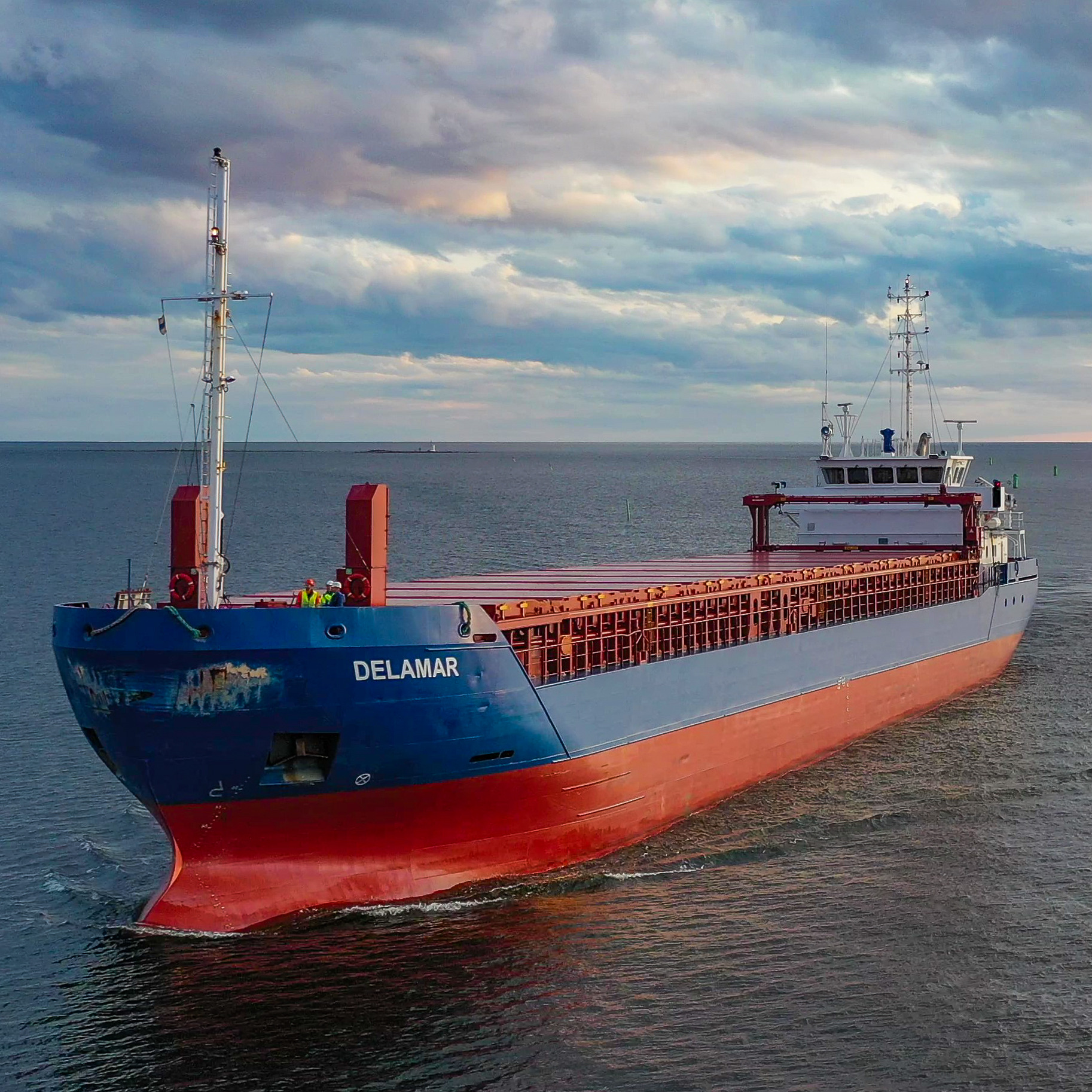Environmental responsibility
One of the easiest ways to decrease carbon footprint is the use of bigger ships and to slow down their speed.
Over 90% of the world’s trade is carried by sea and international vessel traffic which accounts for 2.6% of global emissions. Sea transportation is vital for Finland and Sweden which are the our core market areas. Around 90% of the imports and exports from both countries is carried by sea.
Our roadmap towards fossil-free shipping
As a shipping company operating over 40 vessels in the sensitive waters of the Baltic Sea, we recognise our responsibility to contribute towards emission free shipping. This is why we have committed to reduce our carbon intensity by 50% per ton-mile by 2030 and to reach net zero CO2 emission operations by 2050.
Firstly, we need best available ship design and power train capable of shifting to drop-in fossil free fuels when they are available. Prime examples of this are the order of twelve 5,350 dwt hybrid vessels equipped with battery packs and shore power connection as well as the world’s first LNG-powered bulk carriers Viikki and Haaga.
Secondly, we need to build industrial scale availability of renewable fuels in partnership with leading Scandinavian suppliers. In June 2022, we announced that we entered into an agreement with Finnish fuel supplier Neste for the supply of new co-processed marine fuel oil, which enables up to 80 percent reduction in lifecycle carbon dioxide emissions. In April 2022, we announced that we joined BotniaLink H2 project as the first customer-side stakeholder. The project aims to establish an e-fuel hub in Luleå for the production of hydrogen-based fuels for large ships.
Thirdly, we need customers who share a common future vision for low emission shipping. Over time we have worked with many great companies such as SSAB to introduce LNG-powered Viikki and Haaga, which almost halved emissions between Luleå, Oxelösund and Raahe. In addition, SSAB and Port of Oxelösund have played an integral part in the launch of Virtual Arrival, which has enabled 25% reduction in CO2-emissions in applied voyages between Luleå and Oxelösund.
.jpeg?width=1693&height=1693&name=Reymar_Raahe%20arr_2019-07-17_DJI_0290_Moment(4).jpeg)

Emissions to the water
Growth in a ship’s underwater hull is a factor that can significantly increase vessel’s fuel consumption. We do not use any harmful antifouling paints in our vessels. Instead, divers brush and clean vessels’ hulls in regular intervals. By keeping the hulls clean from algae and other sea organisms, we are able to reduce the resistance and consequently emissions as well. In 2021, we also acquired an underwater drone to our Raahe depot to help to determine the right time for hull cleaning.
The aim of the ballast water treatment systems (BWTS) is to prevent foreign organisms from transferring into other sea areas in the vessel’s ballast water tanks. Ballast water is essential for all types of vessels to ensure the stability and correct trim of the vessel.
The last four owned vessels were equipped with ballast water treatment systems during their scheduled dockings in 2022 meaning that our whole fleet is now compliant with the upcoming regulations.
Emissions are reported on EU and international level
At the moment, the vessels’ emissions are reported to two different systems: EU-led MRV and international, IMO-led DCS. The main difference is that MRV takes into account the voyages to and from EU-ports regardless of the vessel’s flag while IMO DCS takes into account all voyages of the vessel. In MRV-reporting, consumption at anchorage and at the port are excluded while IMO DCS takes into account those as well. ESL Shipping is responsible for reporting these figures for our own vessels.
Emissions of 4,000-6,000 dwt vessels are not reported to MRV or DCS. In order to achieve a comprehensive picture of the our environmental footprint, we have calculated the emissions of these vessels as well and they are included in the figures presented in our Sustainability Reports as well as in Customer Portal. Given the new operations system, we are now able to provide more detailed emissions reporting to our customers.
It is noteworthy that MRV figures take into account the weight of the cargo which results in poor figures when lightweight cargoes which fill up the hold are carried. These cargoes include for example project cargoes, wood pellets and some steel products such as pipes.


